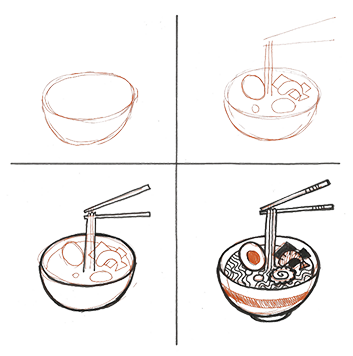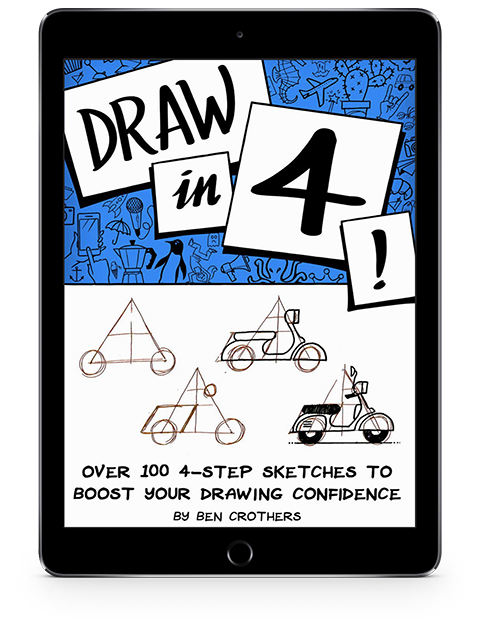Emoji number plates?! Level up your emoji mojo with these 15 nuggets of tasty tips, tricks and trivia about our favourite adorable little pictures.
To state the bleeding obvious, emoji are a thing. In a BIG way. Regular Presto Sketching newsletter readers might know that I have a soft spot for emoji. They’re an amazing, fun and flexible way to express ourselves visually. And emoji are pretty much our main international language; around 95% of humans online are now using these little characters.
So I thought I’d make your day with 15 nuggets of emoji trivia and links. Let’s get into it, shall we?
1. We are sending 60 million of them to each other on Facebook, and 5 billion on Facebook Messenger alone, EV. VER. REE. DAY. Over on Instagram, nearly half of all comments and captions contain emoji, and users from Finland 🇫🇮 are at the top of the table, using emoji in over 60% of text!
2. The most popular emoji (according to this Brandwatch report 📝) are the ‘Face with tears of joy’ 😂 (#1 on Instagram and Twitter), Heart ❤️, Sparkles ✨ and ‘Loudly crying face‘ 😭. And surprise surprise, most popular emoji differ in different countries. France, for example, is rather fond of the wink 😉, but Italy and Spain take it a bit further with a wink and a kiss! 😘

3. Emoji were invented by Shigetaka Kurita in Japan, and were first seen on Japanese mobile phones in 1999. This interview with Kurita is brilliant, and his first sketches of emojis are absolute gold:

The original set of 176 emoji now resides in the Museum of Modern Art in New York.🗽
4. Shigetaka Kurita’s favourite emoji? The heart ❤️. Awww.
5. The original smiley 😃 (perhaps the first emoji?) was invented by ad man and graphic designer Harvey Ross Ball in 1963. He was commissioned to create a graphic to raise morale among the employees of an insurance company after a series of difficult mergers and acquisitions. Ball finished the design in less than 10 minutes and was paid $45 for his work 💸.

6. Oxford Dictionaries named ‘Face with tears of joy’ 😂 its 2015 Word of the Year.
7. World Emoji Day is 17 July. Why? Because that’s the date shown on the ‘calendar’ emoji for Apple and Google 📅 (but not for Samsung, Twitter, WhatsApp and other platforms) And does World Emoji Day have an anthem you can sing along to? Why yes. Yes it does. 🎶
8. Do you want to know what emojis are being used on Twitter? In real time? Of course you do.
9. What about those times when you want to include emoji, but you’re in front of a regular keyboard? Got you covered! Head to getemoji.com or iemoji.com and copy-and-paste 📋 emojis to your heart’s content 👍.
10. Some emoji can have multiple meanings, or different meanings in different cultures. Turns out that this symbol ♻️ means ‘recycle’ in Western culture, but is commonly used for ‘share’ in Islamic ☪️ cultures, like when people post prayers on social media, and encourage others to share. If ever in doubt of the meaning of what you’re sending, best to check using emojipedia.org.
11. Speaking of checking, it’s worth knowing that not all platforms use the same emoji for the same thing, so you might be inadvertently confusing receivers of your messages. For example, the ‘Grinning face with smiling eyes‘ might look like this 😬, or like this 😄, depending on the platform you view it on…. and depending on what you’re trying to say, it could carry a very different tone!

From Investigating the Potential for Miscommunication Using Emoji
12. You can read the entire Moby Dick story in emoji. I can’t wait to see the CliffsNotes of that. 😂😂😂
13. Emoji are being used to evade monitoring and censoring. The Chinese government regularly squashes anything in social media that would appear to be a threat to communist rule, like the growing women’s movement in China. For instance, China’s Twitter-like service Weibo shut down the Feminist Voices account, and then private messaging app WeChat did the same. FYI, Weibo also blocks the #metoo hashtag. But Chinese feminists found a way around it, by using #RiceBunny in its place along with the rice bowl and bunny face emoji. When spoken aloud the words for “rice bunny” are pronounced “mi tu,” a homophone for “me too” that cleverly evades detection.

(Side note: iPhone users in China are missing one specific emoji on their emoji keyboard that shows on all others: the flag for Taiwan.)
14. And what about emoji on number plates? That would be brilliant, if only it were true. As an April fools joke in 2016, the Honda website published a news item that they were introducing emoji number plates in the UK. But hey, you never know… 😉

15. And so, what lies ahead for us in Emoji-Land? If the latest incarnation of emoji and 3D technology are anything to go by, expect more and more animations, face filters, and other facial customisations on your messaging apps and elsewhere. The launch of Apple’s iPhone X brought with it the TrueDepth camera and Animoji, which simply has to be seen to be believed.
It’s worth having a play with these apps, just to get a feel for how your own face can morph into all sorts of expressive, entertaining — and in some cases VERY CREEPY — avatars and whatnot:
- 💃 Gabsee: Put your 3D avatar in the real world
- 😮 Mirror AI: Turn your selfie into an emoji
- 🎤 MyIdol: I had loads of fun creeping out my family and friends with this one… you’ve been warned!
Emoji will be more and more inclusive and instructive
Expect emoji to also bring more of our beautiful diverse world to our keyboards, and therefore to our mindsets. The upcoming Unicode version 11 includes faces with red hair and curly hair, superheroes, more body parts, and more accessories. I think it’s actually good to see a ‘woman’s shoe’ that is flat-soled and blue, rather than the stereotypical (and some might say overly-sexualised) red stiletto heel.
Some new emoji actually take advantage of the way they can transcend language as we know it, especially for people who are illiterate. Earlier this year, Unicode approved the addition of the mosquito emoji, which can be used as a way to better describe mosquito-borne illnesses like malaria and Zika.
And don’t forget: anyone can submit an emoji proposal. What would you submit?
Parting note: use emoji as inspiration ✨in your own sketching
As I’ve mentioned in Chapter 5 of Presto Sketching (Sketching Faces and Expressions), sketching emoji is a great way to broaden the range of facial expressions you can render in your own visual communication. Try copying the emoji that you see on your device today into a notebook, and then try incorporating them into other sketching and visualising you do. Before long, all of your sketches will have a lot more vitality and character! 👋



